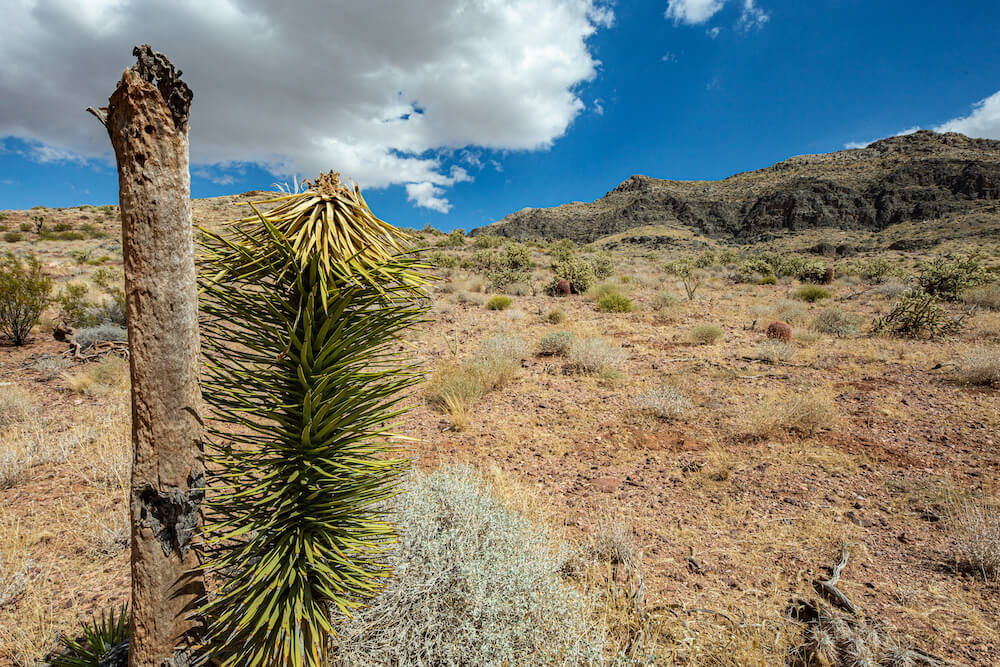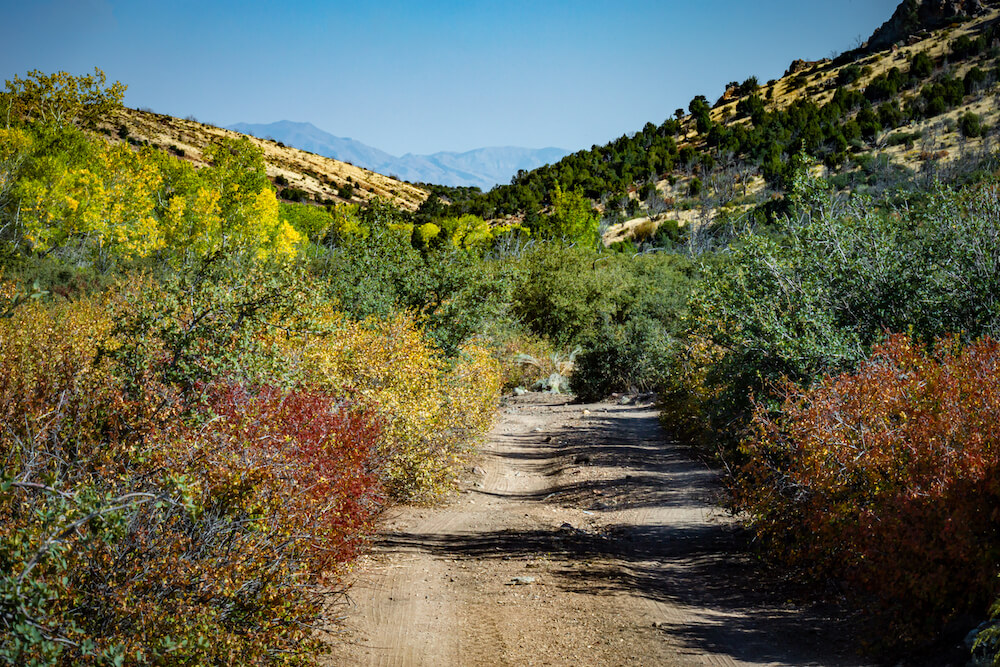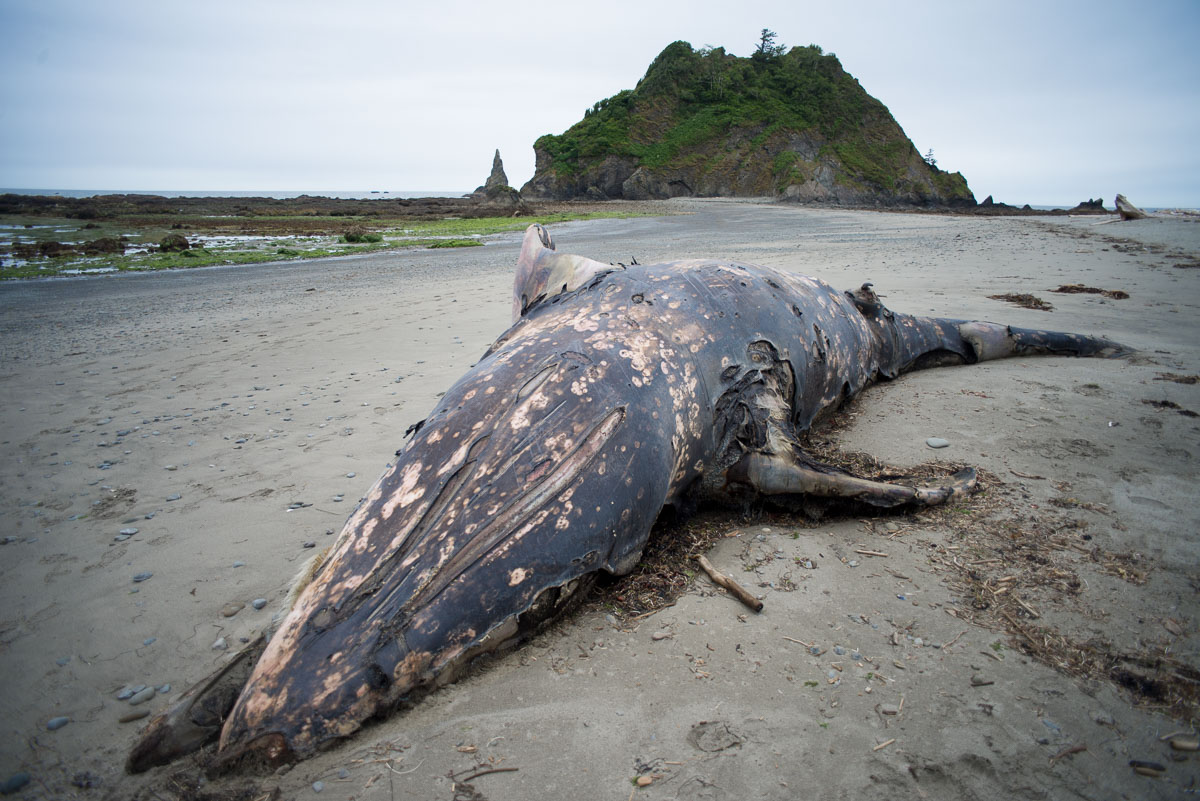
by DGR News Service | Dec 18, 2019 | Agriculture, Biodiversity & Habitat Destruction, Climate Change, Mining & Drilling, The Problem: Civilization, Toxification
A series of headlines from around the world, compiled by Max Wilbert and Mark Behrend. Featured image by Max Wilbert.
2019 Was the 2nd Hottest Year on Record
Global average temperature reached the 2nd highest annual level ever recorded, according to preliminary data for 2019. While the data is not yet finalized, it’s almost certain 2019 will go down as the 2nd hottest ever. The hottest five years on record have been the last five years, and we are in the final days of the hottest decade in the record.
https://twitter.com/ClimateOfGavin/status/1206608106819661826
70,000 Children Have Been Detained at the U.S. Border in 2019
As climate crisis and ecological collapse drives ever more migration, abuse at the southern border of the U.S. is escalating. One recent report finds that nearly 70,000 children have been detained in 2019:
The story lays out in excrutiating detail the emotional pain of victims of President Donald Trump’s child separation policy, focusing on, among others, a Honduran father whose three-year-old daughter can no longer look at him or connect with him after being separated at the U.S. border and abused in foster care.
“I think about this trauma staying with her too, because the trauma has remained with me and still hasn’t faded,” the father told AP.
The 3-year-old Honduran girl was taken from her father when immigration officials caught them near the border in Texas in March 2019 and sent her to government-funded foster care. The father had no idea where his daughter was for three panicked weeks. It was another month before a caregiver put her on the phone but the girl, who turned four in government custody, refused to speak, screaming in anger.
“She said that I had left her alone and she was crying,” said her father during an interview with the AP and Frontline at their home in Honduras. “‘I don’t love you Daddy, you left me alone,'” she told him.
https://www.commondreams.org/news/2019/11/12/causing-profound-trauma-trump-administration-detained-record-breaking-70000-children
Koalas Declared “Functionally Extinct” After Fires Destroy 80% of Remaining Habitat
Experts believe the long-term outlook for the species is bleak, after centuries of habitat destruction, overhunting, and culling.
https://www.forbes.com/sites/trevornace/2019/11/23/koalas-functionally-extinct-after-australia-bushfires-destroy-80-of-their-habitat/#4dfb62fc7bad
Light Pollution is Key ‘Bringer of Insect Apocalypse’
Light pollution is a significant but overlooked driver of the rapid decline of insect populations, according to the most comprehensive review of the scientific evidence to date.
Artificial light at night can affect every aspect of insects’ lives, the researchers said, from luring moths to their deaths around bulbs, to spotlighting insect prey for rats and toads, to obscuring the mating signals of fireflies.
“We strongly believe artificial light at night – in combination with habitat loss, chemical pollution, invasive species, and climate change – is driving insect declines,” the scientists concluded after assessing more than 150 studies. “We posit here that artificial light at night is another important – but often overlooked – bringer of the insect apocalypse.”
https://www.theguardian.com/environment/2019/nov/22/light-pollution-insect-apocalypse
Sea Ice Update:
Arctic sea ice extent for November 2019 ended up at second lowest in the 41-year satellite record. Regionally, extent remains well below average in the Chukchi Sea, Hudson Bay, and Davis Strait.
October daily sea ice extent went from third lowest in the satellite record at the beginning of the month to lowest on record starting on October 13 through October 30. Daily extent finished second lowest, just above 2016, at month’s end. Average sea ice extent for the month was the lowest on record. While freeze-up has been rapid along the coastal seas of Siberia, extensive open water remains in the Chukchi and Beaufort Seas, resulting in unusually high air temperatures in the region. Extent also remains low in Baffin Bay.
https://nsidc.org/arcticseaicenews/
Gemeni Solar Project Threatens Important Habitat in Nevada
The US Fish and Wildlife Service (FWS) recently released a document identifying the severe impacts that would be inflicted on the Mojave desert tortoise (Gopherus agassizii) from the Gemini Solar Project, located in southern Nevada. The agency, tasked with recovering rare species headed for extinction, wrote a Biological Opinion for the Bureau of Land Management (BLM), the agency in charge of permitting the 7,100 acre Gemini Solar Project which will be located on public lands near Valley of Fire State Park, as part of its consultation process. BLM is reviewing an Environmental Impact Statement for the project.
Although the document claims that mitigation measures will make up for the impacts, the FWS claims that the Gemini Solar Project could kill or injure as many as 1,825 federally threatened desert tortoises in its 30-year operational lifespan. While the Biological Opinion assures us that the project would be heavily mitigated, it still raises dire concerns about these impacts.
The Mojave desert tortoise had declined so drastically decades ago that in 1990 the U.S. Fish and Wildlife Service listed the species as federally threatened. In the year 2000 the FWS began systematically surveying desert tortoise population numbers across its range using the latest scientific methods. What they saw was continuing declines of tortoise numbers, and even population crashes. Based on these surveys the Desert Tortoise Council has recently recommended up-listing the status of the Mojave desert tortoise from a threatened status to a higher endangered status–which means an emergency to stave off extinction.
The vegetation would be mowed using 23,000 pound Heavy Duty mulchers. Because not all individual tortoises will be detected by biologists or project staff, the agency is concerned that death and injury of desert tortoises could result from excavation activities such as clearing of vegetation, and entrapment in trenches and pipes during construction. Tortoises could be crushed by heavy vehicles. The FWS claims tortoise burrows would be avoided during all this constriction and maintenance activity with equipment and vehicles over years, but we have seen tortoise home burrows crushed and caved in by such activities on other development projects.
After solar project construction is complete and hundreds of tortoises are dug up and raided out of their burrows, the agencies are proposing to then release them back on to this disturbed habitat. The presence of re-occupied desert tortoises on the solar site, with vehicle traffic, may result in injuries or death during routine maintenance of facilities such as vegetation trimming. Tortoises outside of the fenced solar site may also be injured or killed due to truck traffic along the transmission lines and associated access roads.
Capture and translocation (moving) of desert tortoises may result in death and injury from stress or disease transmission associated with handling tortoises, stress associated with moving individuals outside of their established home range, stress associated with artificially increasing the density of tortoises in an area and thereby increasing competition for resources, and disease transmission between and among translocated and resident desert tortoises.
Translocation has the potential to increase the prevalence of diseases, such as Upper Respiratory Tract Disease (URTD), a major mortality factor for desert tortoises. Stresses associated with handling and movement could exacerbate this risk in translocated individuals that carry diseases. Equally, desert tortoises in quarantine pens could increase their exposure and vulnerability to stress, dehydration, and inadequate food resources.
The Gemini Solar Project represents an unacceptably large threat to tortoise populations, connectivity, and high-quality habitat in the northeastern Mojave Desert. FWS appears to us to be minimizing the threat of this project and recommending mitigation measures that will fail to halt tortoise mortality and further cumulative habitat degradation.
http://www.basinandrangewatch.org/
Australia Bushfires Rage
3900 square miles of Australia (an area more than 3 times the size of Yosemite National Park) were burned during a single week of November. – New York Post, 11/26/2019
Rice Farming is Major Source of Methane Emissions
Rice farming, long believed responsible for 2.5% of carbon emissions, is now believed to emit up to twice as much — due to new farming methods that only burn the fields intermittently, rather than annually. Leaving the fields in standing water has been found to stimulate bacterial growth that adds the equivalent of 1200 coal-fired power plants in carbon emissions. – Independent (online news magazine), 09/10/2018
The Plastic Pollution Explosion
A deer found dead in rural Thailand recently had 18 pounds of plastic in its stomach. – CNN, 11/26/2019
Consumer Culture Metastasizing Across the Globe
France says that Black Friday is the worst ever American import, topping Halloween and McDonald’s. The one-day shopping frenzy is said to produce the equivalent of a truckload of textiles being dumped every second, across France. – France 24, 11/30/2019
E-Waste is Growing Fast
Electronic waste worldwide is expected to exceed 50 million tons annually by 2020. Before it becomes e-waste, producing a single computer and monitor requires 1.5 tons of water, 48 lbs. of chemicals, and 530 lbs. of fossil fuels. – “The Balance SMB (balancesmb.com), 10/15/2019
Amazon Deforestation Accelerating Under Bolsonaro
Amazon deforestation in 2019 (so far) is estimated at more than 1130 square miles, an area equal to 97% of Yosemite. – CNN, 11/14/2019
Another estimate puts Amazon deforestation at 3700 square miles thus far this year.
Sea of Okhotsk Warming Rapidly
Parts of the Sea of Okhotsk, between Siberia and Japan, are now 3° C. warmer than in pre-industrial times. Oxygen levels in the sea are down, and the Okhotsk salmon population has declined 70%, just since 2004. With colder areas of the planet reacting fastest to climate change, scientists fear that what is happening around Okhotsk is a warning for seas and sea life globally. – Washington Post, 11/12/2019
Air Pollution in India
Forty percent of school children in four of India’s largest cities have lung capacity described as “poor” or “bad,” following breathing tests. Air quality in Indian cities is consistently rated among the worst in the world. – India Times.com, 05/05/2015
Niger is Desertifying Rapidly
In Niger, an area of grasslands equal to 110,000 football fields is lost every year to desertification and erosion. Nomadic herdsmen, who have followed this lifestyle for centuries, blame climate change. Some report losing half of their herds in recent years, and say they are now being driven into cities to look for work. – France 24, 12/05/2019
30-40% of Food is Wasted for “Cosmetic Reasons”
Thirty to forty percent of American farm produce never makes it to market, due to inefficient distribution, and to discarding for cosmetic reasons. – France 24, 11/30/2019
Alaska Temperatures Caused Salmon to Have Heart Attacks
Record high temperatures across portions of Alaska caused thousands of salmon to have heart attacks and die last summer.
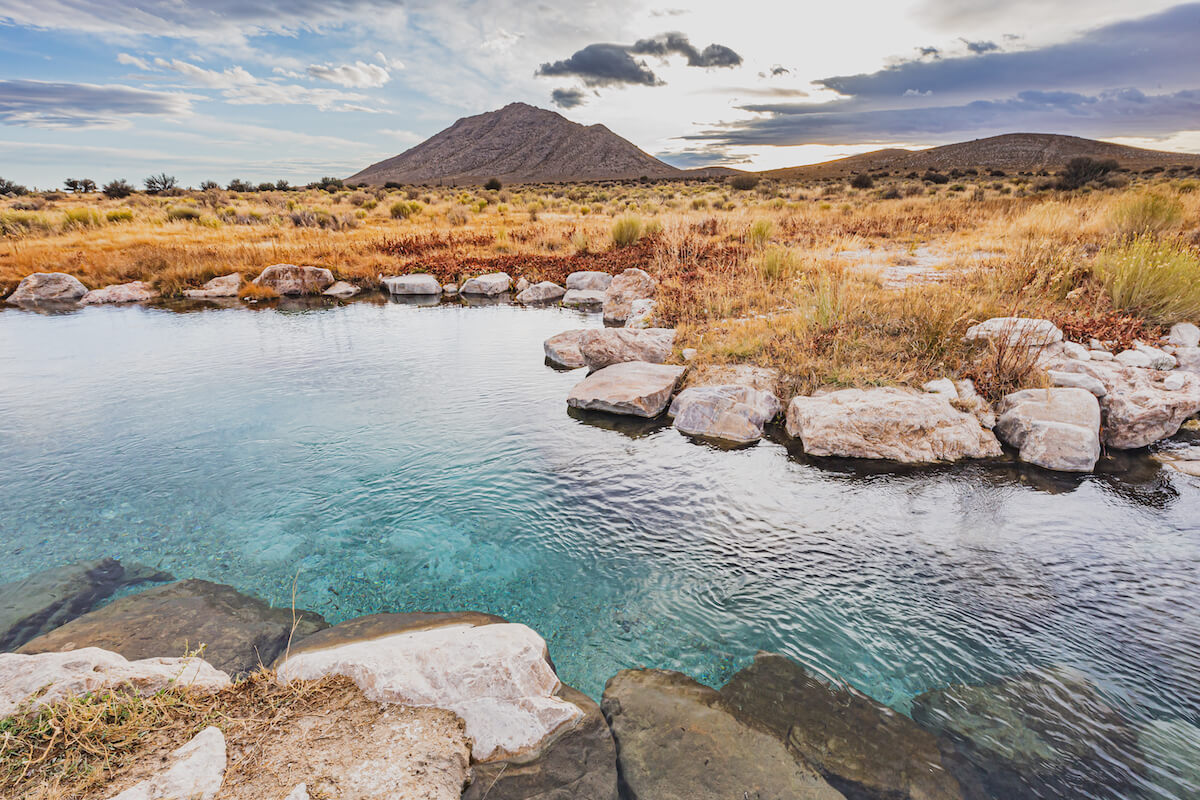
by DGR News Service | Nov 8, 2019 | Mining & Drilling
Written and photographed by Justin McAffee
On a warm late-summer day, an old friend and I drove down some 50 miles of gravel road through a remote part of Nevada’s Tule Desert. We spotted a flock of golden eagles, and one even landed on a nearby Joshua Tree. The moment was magical. Yet the moment was fleeting as we looked at the overlay map of parcels the BLM would be selling to oil companies for pennies on the dollar, right where we stood.
In the coming weeks, my friend from the Sierra Club would take me much further into Nevada’s Great Basin where in total an area the size of Delaware is up for sale by the BLM. We took pictures to document what was at stake.
One year earlier, on a three-day journey through the Great Basin and beyond, down a small watershed that drains into Lake Mead, I had been through the same places with a group of native people from Nevada. These places we perceive as “empty” deserts are not at all empty. They are teeming with all sorts of value beyond some corporation’s profit margins. They are full of life, plants, animals, life-giving water as well as human culture.
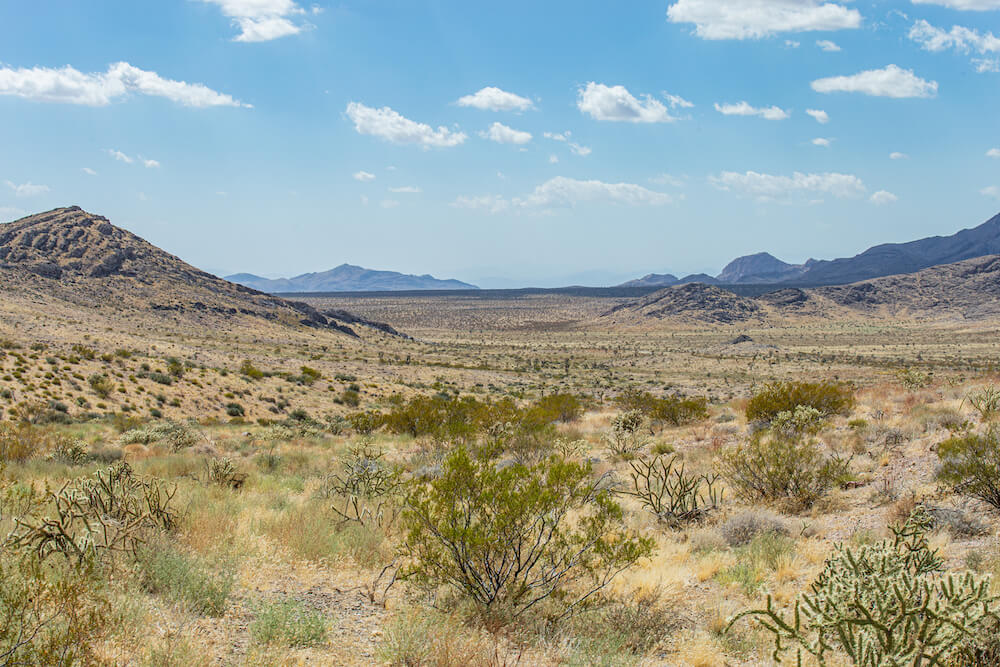
My wife and I were there to film a three-day run with indigenous people who were opposed to the construction of a water pumping system and 300-mile pipeline that would take water from Eastern Nevada and deliver it to the Las Vegas Valley. This run they called a sacred run. For these spirited and determined runners, it was more of a prayer than a protest. It was a prayer for the water, animals, plants and their own way-of-life threatened by neverending development by the colonizer culture still occupying their ancestral lands.
On the second day of the run, my wife and I stood on a hilltop with Western Shoshone Elder Johnnie Bobb. He wanted to show us a special place that was along the route of the run. He said it was a sacred place where his people and neighboring tribes would meet and pray. There was evidence that ceremony had taken place at the site previously, with red ribbons tied to tree limbs.
Johnnie Bobb offered prayers and burned sage while we were there. He told us how important these lands were to his people. The bones of their ancestors were buried there since time immemorial. The very land itself was tied to his people. To have them taken away was like having a part of one’s self taken.
We looked out over the valleys and mountains, pondering the moment. These places are shrinking by the minute. In fact, natural habitats are disappearing in the American West at a rate of one football field in size every 2.5 minutes. That’s an area the size of Los Angeles every year.
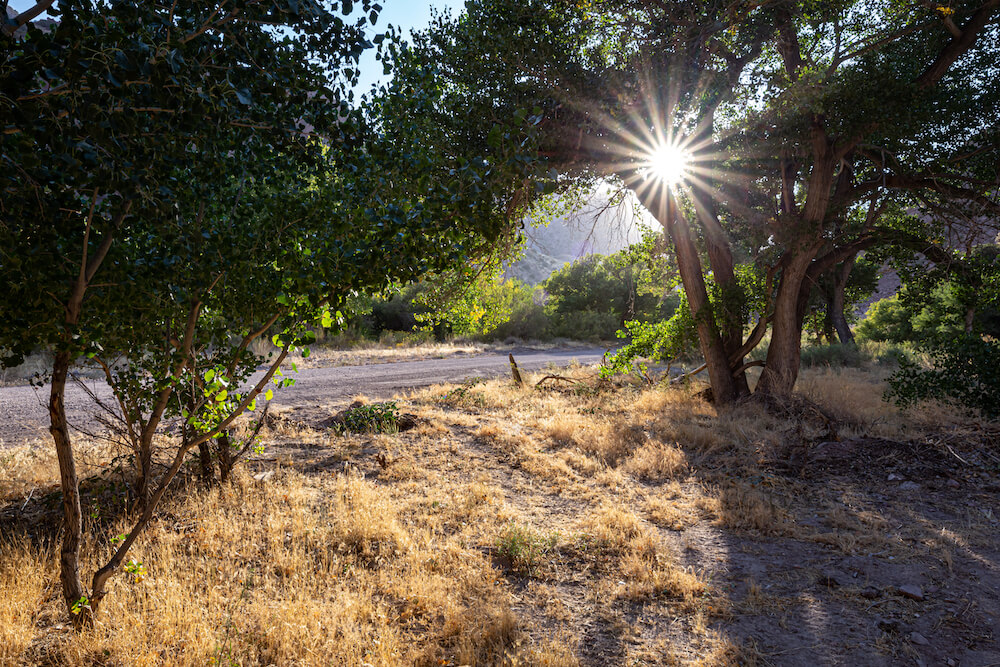
Our species has lived in mostly wild spaces for the better part of 200,000 years. If the time period of our species is a football field, we’ve only lived with agriculture for the last half yard, and industrial civilization for an inch or two. Undeveloped natural lands are in our DNA. The lack of connection with nature for western culture particularly is an obvious explanation for so many of our societal ills.
This Great Basin is among the few precious natural spaces left. We must take a stand now and say enough is enough. We can’t continue to exponentially build and grow until all of these places are consumed and gone forever. We can’t stand by any longer hoping someone else will put a stop to this. If not now, then when? If not us, then who?
As the great photographer Ansel Adams once said, “It is horrifying that we have to fight our own Government to save the environment.” Yet this is exactly what we must do. We must not tolerate any longer the destruction of these ancestral homelands, the homes of plant and animal species, and the land we need for the Earth to heal. We must fight.
Overview
90 percent of our public lands are available to oil and gas drillers while only 10 percent are available for a focus on conservation and other values including recreation and wilderness (
https://www.wilderness.org/articles/article/open-business-and-not-much-else-analysis-shows-oil-and-gas-leasing-out-whack-blm-lands). So it’s no surprise that over the
next 5 months, the BLM Ely district is offering up an area the size of Delaware to oil and gas companies. Their stated mission “to sustain the health, diversity, and productivity of America’s public lands for the use and enjoyment of present and future generations” is just a platitude. It’s mostly there to preserve potential profits for corporations.
Opening up these areas to fracking seems particularly ill-conceived, considering its a desert, water is already scarce, and they will be threatening the ground water, aquifers and water ways that feed our drinking supplies and feed plant and wildlife. Many of these parcels have watersheds that feed into Lake Mead, the primary drinking water for Las Vegas.
This is all part of taken lands that many indigenous people who still live on or near, and hold sacred. One of the areas we went to with Johnnie Bobb, the Wester Shoshone elder, where he did a blessing, was on a parcel up for sale.
Should these lands be explored for oil, there will be roads and other development necessary that will disrupt that natural habitat of flora and fauna of the Great Basin and Mojave, areas where the Joshua Tree and the desert tortoise are endangered.
Total Acres
The acreage for the March and February lease sale is 355,195 acres. The November lease sale is a total of 273 parcels encompassing 574,075 acres. The December lease sale is a total of 451 parcels encompassing 777,197.
Total in the Ely District: 1,706,467 by March of 2020.
Delaware is 1,592,780 acres.
BLM November Sales
BLM December Sales
BLM February and March Sales:
Map of the parcels for sale
Overview and Petition
This page has an overview of the issues. They tend to focus on the outdoor recreation economy and the attractive parks. But there is mention of the habitat threatened as well.
Rally on November 12th
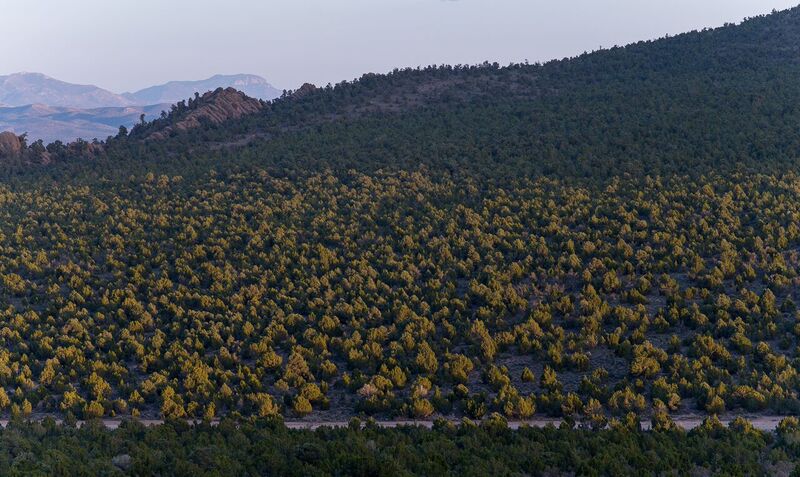
by DGR News Service | May 13, 2019 | Biodiversity & Habitat Destruction, The Solution: Resistance
via The Pinyon-Juniper Alliance
The Pinyon-Juniper Alliance was formed several years ago to protect Pinyon-Pine and Juniper forests from destruction under the BLM’s and Forest Service’s misguided “restoration” plan. Since that time, we have attended public meetings, organized petitions, talked with politicians and locals, coordinated with other groups, written articles and given presentations, and commented on public policy.
Things now are worse than ever. The latest project we’ve seen aims to remove PJ forest from more than 130,000 acres of Grand Staircase-Escalante National Monument. That’s more than 200 square miles in one project.
Everywhere we go, we see juniper trees cut. Most recently, just this past weekend in Eastern Oregon, an entire mountainside was littered with chainsawed juniper trees. Earlier today, one of our organizers spoke with an elder from the Ely-Shoshone Tribe. She told us about two conversations she had with agency employees who referred to old pinyon-pines as “useless” trees that needed to be removed. She responded by saying “I wouldn’t be here without those trees,” and told them about the importance of pine nuts to Great Basin indigenous people.
And still the mass destruction continues.
However, looming behind these atrocities is an even bigger threat. Due to global warming, drought is becoming almost continuous throughout most of the intermountain West. The possibility of a permanent dust bowl in the region appears increasingly likely as governments worldwide have done nothing to avert climate catastrophe.
Pinyon-Pine and Juniper are falling to the chainsaw. However, they have been able to survive the saws of men for two hundred years. It is unlikely they will be able to survive two hundred years of unabated global warming.
The biggest threat to Pinyon-Juniper forests isn’t chainsaws or the BLM. The biggest threat is the continuation of industrial civilization, which is leading to climate meltdown. Stopping industrial civilization would limit this threat, and would also stop the flow of fossil fuels that powers the ATVs and Masticators and Chainsaws currently decimating Pinyon-Juniper forests.
Derrick Jensen has said that often people who start out trying to protect a certain forest or meadow end up questioning the foundations of western civilization. We have undergone this process ourselves.
Given our limited time, energy, and resources, our responsibility is to focus on what we see as the larger threats. Therefore, the founders of the Pinyon-Juniper Alliance have turned to focus on revolutionary work aimed at overturning the broader “culture of empire” and the global industrial economy that powers it. We are not leaving the PJ struggle behind. If you are engaged in this fight, please reach out to us. We need to network, share information, and work together to have a chance of success. We are shifting the form of our struggle. If this struggle is won, it will result in a world that Pinyon-Juniper forest can inhabit and spread across freely once again. And if it’s lost, our work at the local level is unlikely to matter. There are few revolutionaries in the world today, and we have a responsibility to do what is necessary.

by Deep Green Resistance News Service | Oct 10, 2018 | Protests & Symbolic Acts
by Max Wilbert / Deep Green Resistance
Last week, I was invited to join a Sacred Water Run-Walk in Nevada by Chief Johnnie Bobb of the Western Shoshone National Council. Chief Bobb attended the Sacred Water, Sacred Forests gathering back in May, and we exchanged contact information.

I decided to attend last minute after his phone call, and gathered my supplies and energies. It is a 14 hour drive from my home in Oregon to the area the walk was to take place, so I took two days to make the drive. I stopped along the way and purchased as much food and supplies as I could afford, although I didn’t know exactly what was needed.

I slept on the night of October 1st in my car at the Swamp Cedars, where we were supposed to meet. The Swamp Cedars are an ecologically unique stand of Rocky Mountain Junipers on the bottom of Spring Valley. Pure water coming out of the ground, shade from the trees, and rich grasses that brought in game animals made this area a gathering place for Newé (Western Shoshone/Goshute) people for thousands of years. It is also why the people were gathered here when they were massacred by the U.S. Calvary, one of several massacres here.
I was awoken before the dawn the next morning when Rupert Steele, the chairman of the Confederated Tribes of the Goshute Reservation, pulled in next to me. We spoke for a while, and then others started to arrive. The others included about 15 or 20 other people from 12 different indigenous nations.
Mr. Steele and Chief Johnnie Bobb both said prayers and burned sage as the sun rose over Spring Valley. I introduced myself to various people, including the woman who organized the run (Beverly Harry). I told her about the food, which she was happy about. Then the runners started out. I stuck around for a while and made some coffee for the elders. One of them asked me to join them in the run-walk, a great honor. I ended up doing 10 miles that day. We did it relay style, so at least one person from the group ran or walked every mile.
We covered 100 miles that first day, then stayed at Cathedral Gorge State Park. We had a nice night around the fire and got to know each other a bit better. I was able to stay through the second day. We covered another 75 miles the second day, and then I had to leave. The runners continued down to the Moapa Paiute reservation.
Our network against the water grab is growing. There were some solid people there. In the event SNWA begins to build the pipeline, there will be serious resistance.

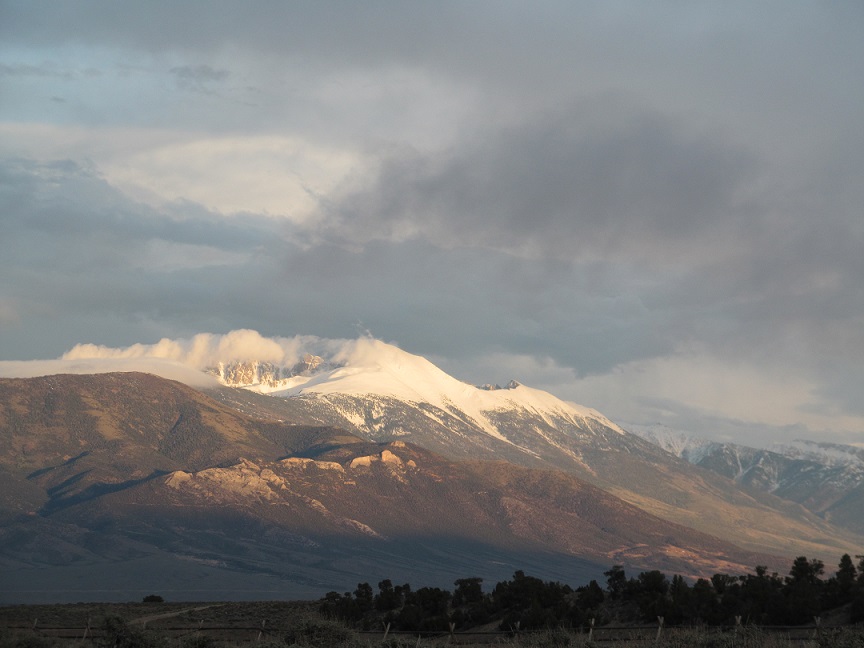
by Deep Green Resistance News Service | Aug 18, 2018 | Lobbying
Featured image: Great Basin National Park from Spring Valley, Nevada
by Great Basin Water Network
Ely, Nevada: A broad coalition of Nevadans committed to protecting the state’s water resources are declaring victory in their opposition to the SNWA groundwater pipeline. They applaud a ruling by the Nevada State Engineer denying all water rights applications for the project.
Great Basin Water Network and White Pine County say the decision is essentially a death-knell for the roughly 300-mile pipeline proposal. These groups oppose SNWA’s proposed groundwater export and pipeline project because it would cause catastrophic long term environmental harm to some of Nevada’s most pristine and treasured areas, and because it would cause long-term economic devastation to rural communities throughout eastern Nevada. Following favorable decisions in Nevada’s District and Supreme Courts, it appears that the Nevada State Engineer agrees.
“With the denial of these applications by the State Engineer, this ill-conceived multibillion dollar boondoggle is now dead in the water,” said Abigail Johnson of the Great Basin Water Network. “After a string of court victories, we have a decision showing that the water is not available for this project without hurting the area’s existing water rights and environment.”
“We welcome the State Engineer’s denial of SNWA’s applications, which clearly was required by Nevada water law, as the State District Court and Supreme Court have explained,” said the coalition’s attorney, Simeon Herskovits of Advocates for Community and Environment. “We do, however, disagree with the State Engineer’s gratuitous finding that SNWA’s monitoring, management and mitigation (or 3M) plan is adequate. Their slightly elaborated 3M plan remains as much of a sham as it always has been,” Herskovits added.
“White Pine County residents and rural Nevadans are glad that the limits of available groundwater resources have been acknowledged,” declared White Pine County Commissioner Gary Perea. “The denial of SNWA’s applications finally recognizes that, if allowed, the project would take more water than the system could bear, hurting existing water rights and the economies that depend on them.”
“We will continue to stand up and ensure that the State Engineer and SNWA follow the law, and protect our water rights and resources from overpumping and irreversible harm,” agreed another White Pine County Commissioner, Carol McKenzie, from Lund.
Kena Gloeckner, whose family has been ranching in Lincoln County’s Dry Lake Valley – a target of the project – for many generations, said “Not only would this groundwater project have jeopardized our family’s 150-year-old legacy and livelihood, but it would have also ended a way of life valued by local residents. Ranchers and farmers on the ground have long known that the aquifers in these rural valleys are interconnected and are at or near their limits – there is simply nowhere near the amount of water that SNWA wanted to take.”
Read more about the SNWA pipeline at DGR Southwest Coalition





